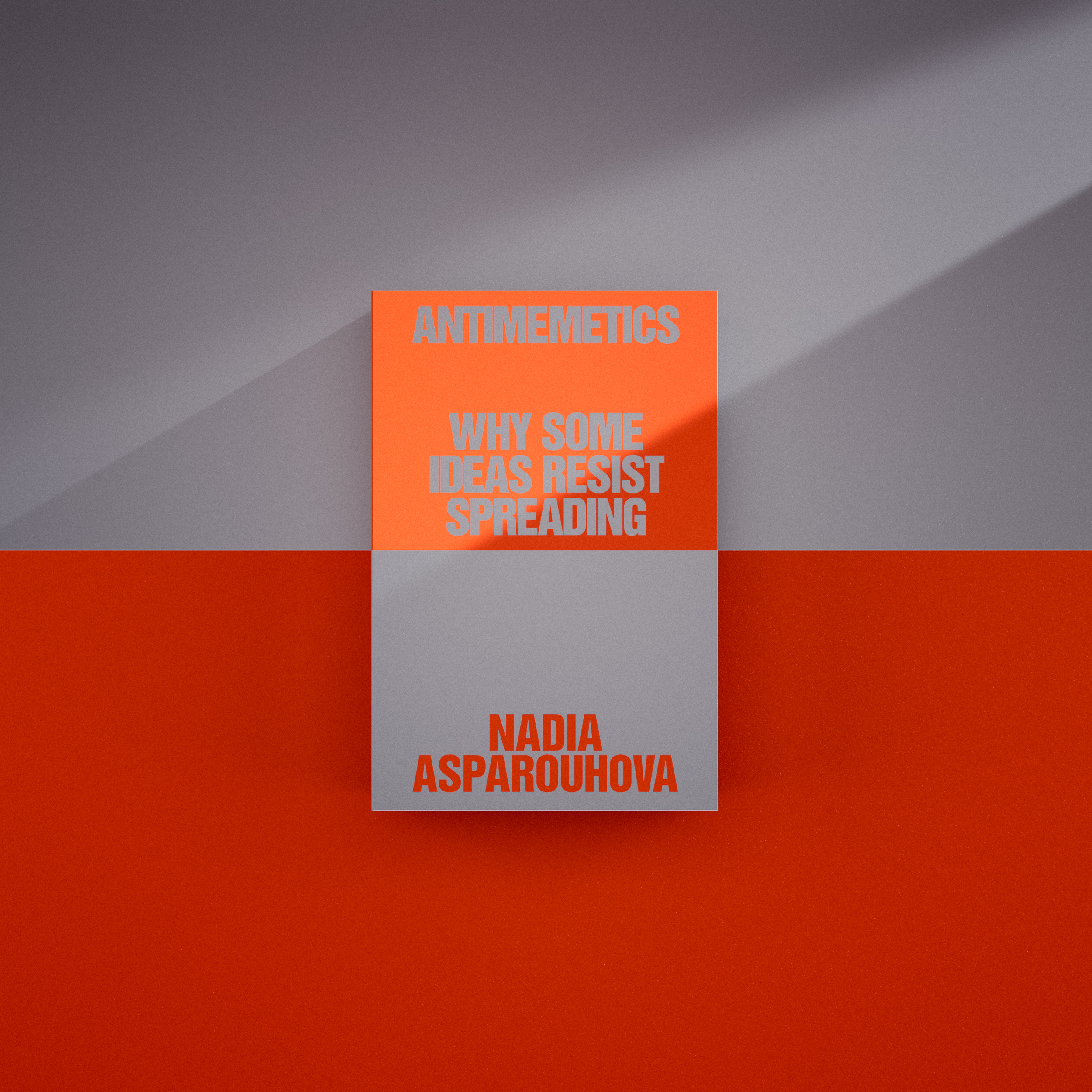The anti-social media stream. Otherwise known as my personal feed. Similar to Linus's stream by Linus Lee.
Curation / The Stream
-
Quick website news. I’ve added callouts for some areas of the website, including the newsletter at the bottom. I removed a bunch of social links that no longer are representative of where I’m at online. I’ve removed the two-layout style for a single one since the content I’m usually here to bring is not worth the width.
I’ve created link previews! For select (and recent) links, I’m now using a
LinkPreviewAstro component. It’s using the metadata from websites to create these nice link previews. There’s a manual override in case the parsing did not reach my standards of link previews.As an example, the new Track Star Podcast is awesome, and here’s the latest episode I watched.
 The Track Star Podcast · podcasts.apple.com
The Track Star Podcast · podcasts.apple.comListen to Jack Coyne's The Track Star Podcast podcast on Apple Podcasts.
 The Great American Songbook EXPLAINED | The Track Star Podcast with Jack Coyne · www.youtube.com
The Great American Songbook EXPLAINED | The Track Star Podcast with Jack Coyne · www.youtube.comThe Track Star Podcast continues with a deep dive into the Great American Songbook, the tradition that shaped American popular music as we know it. Guided by...
There’s many other small updates to make the website feel more user friendly, including updated pagination and updating tags. Also, the line breaks in essay content is longer now, so you can figure out if you want to choose to read more.
-
I’ve been thinking how much politics I’ve been paying attention to since the inauguration. I think the expectation things would be different and the enthusiasm felt about how some tech folks thought we could built government better was at best a shortfall. I didn’t have those personal feelings as I felt much the opposite, on how to prepare for authoritarianism and tyranny.
That’s why I think this podcast conversation between Jasmine Sun and Kelsey Piper was an eye opener to understand and keep tabs on the tech community sentiment on current US politics.
 how dems lost the future (ft. kelsey piper) · jasmi.news
how dems lost the future (ft. kelsey piper) · jasmi.newstech vs. trump, authoritarian envy, the case for argument
This pairs very nicely with understanding extremist views from Nadia Asparouhova’s book release this year, Antimemetics: Why Some Ideas Resist Spreading.
Antimemetics: Why Some Ideas Resist Spreading · darkforest.metalabel.comWhy do some ideas spread like wildfire, while others resist being seen — despite their importance? A new book by Nadia Asparouhova explores the emerging phenomenon of antimemetics. Published by the Dark Forest Collective.
I have a lot to say about this book, but I’ll do a write-up later. Back to the conversation, I think my previous post about how the vibes are off is a much better metric of how Democrats lost the 2024 election in a huge way because they were not assessing what public sentiment was anymore. We need more acknowledgement of real-world struggles, not the stats of GDP numbers.
-
Back in the day, I used to get the SF Chronicle newspaper delivered. They had this iconic “Little Man” where I remember seeing them in movie reviews. I was never the biggest fan of the star rating system. The thumbs up system that Siskel and Ebert had was a little better as two critics giving their opinions. The little man had visuals that explain how I would recommend a movie to someone. As not even worth your time, something to sit through, and standing ovation (or in the little man’s case, jumping out of your seat clapping).
 Illustrated adventures of Little Man, The Chronicle's toughest critic · projects.sfchronicle.com
Illustrated adventures of Little Man, The Chronicle's toughest critic · projects.sfchronicle.comSince the early 1940s, the small bald guy in the bowler hat has been the Bay Area's arbiter of good taste. Used by Chronicle critics as a rating icon, he really gets around — to movies, live theater, concerts and football games. Here's an illustrated guide to some of the places The Chronicle dispatched him this year.
-
“The vibes are off” is a colloquial expression used to describe a situation where something feels wrong or uncomfortable, even if it cannot be precisely explained. It suggests that the atmosphere or emotional tone of a place, interaction, or event is not as expected or desired. This phrase often implies a sense of unease or discomfort that is sensed intuitively rather than being based on specific, tangible evidence. The term “vibes” refers to a distinctive feeling or quality that can be sensed, often involving shared emotional states or atmospheres.
Gary’s economics explains more of how the public commons perceives the economy vs economists
 Why Labour and Trump will both fail · www.youtube.com
Why Labour and Trump will both fail · www.youtube.comThey have the same problem - and don't have a solution.
And it applies to all sorts of scenarios.
 The vibes are off. · www.theverge.com
The vibes are off. · www.theverge.comThe vibes are off. Some advertisers see Meta pulling back from moderation as a signal they should stop pushing social media outlets to keep hate speech in check, according to The Wall Street Journal. Some have reportedly already stepped back: …the Association of National Advertisers, [which] represents major advertisers such as Procter & Gamble, AT&T and General Motors, quietly ended a brand-safety effort called “Engage Responsibly,” partly to avoid scrutiny or litigation…
And then there’s this.
Maybe when we say the vibes are off, what we really mean is that every person you pass on the street now feels like a glimpse of another dimension behind a glass. — Whizy Kim, The Vibes Are Off: COVID & Losing Shared Reality
 The Vibes Are Off: What Happens When We Lose Our Shared Reality · www.refinery29.com
The Vibes Are Off: What Happens When We Lose Our Shared Reality · www.refinery29.comDuring the pandemic, we've felt our sense of shared reality slip.
-
Colin and Samir interview Johnny and Izzy Harris about their careers and the creation of their media company, NewPress. (Also, see NewPress network’s other shows like Search Party and Tunnel Vision).
 The Future of YouTube Explainers Is Here · news.thepublishpress.com
The Future of YouTube Explainers Is Here · news.thepublishpress.comFormer Vox journalist Christophe Haubursin partners with Johnny and Iz Harris
Observations
Key Principles for Building a Creative Organization
- Bias towards action - Make decisions quickly, do things fast, and solve problems without overthinking.
- Treat others with kindness and respect, both within and outside the team.
- Templates - Find where structure works and leaves room for creativity.
- They specifically mentioned templates in the context of creating a reliable system that supports creativity. Templates refer to establishing repeatable formats that streamline the creative process and improve team collaboration.
- Johnny Harris mentioned that script templates were a very large document with tables, color coding, and other elements that enable a team to work together with communication and structure. Izzy Harris added that these are structures that still allow for creativity. The aim is to systemize repetitive creative tasks without constraining creative output, enabling consistent execution and scalability.
- In my own way, templates have allowed me to stay focused, also had to grow organically because I need to understand the underlying structure first
- Care more about getting it right than being right. That lends itself to feedback and being open to it.
The odd thing about Voice Notes
- Johnny and Izzy Harris use voice notes as a method of communication to increase efficiency and maintain a personal touch. Johnny uses voice notes, looms, and Marco Polos to communicate with his team, as he can convey what needs to be said in minutes. Izzy noted she is delighted by 6 second voice notes.
- Voice notes are useful for asynchronous communication. Team members do not need to be available at the same time in order to communicate effectively
- Voice notes allow for more detailed explanations and can convey nuance and tone more effectively than text-based communication
NewPress
New Press is envisioned as a new news media entity that will function as an umbrella company overseeing five to eight Creator-led, independent journalism channels.
Here’s a breakdown of what New Press is, what to expect from its offerings, and how it aims to differentiate itself from entities like Vox, according to the sources:
- Structure and Mission:
- Creator-Led Channels: New Press will consist of multiple channels, each led by independent creators.
- Operational Support: While creators will manage their channels creatively, New Press will handle operational and project management aspects. This includes brand deals, agency relations, syndication, publishing, upload timelines, and providing a project management team and thumbnail designers.
- Shared Resources and Collaboration: Creators will have the opportunity to collaborate, brainstorm, and support each other.
- Offerings to Creators:
- Financial Security: Creators will receive a salary, benefits, and a share of the channel’s revenue as it grows.
- Creative Freedom: Creators can focus on content creation without the burden of business operations.
- Operational Support: New Press provides a full operations team to handle tasks such as project management.
- Content and Accessibility:
- Accessibility: New Press aims to make videos accessible to a wide audience by using plain language and avoiding jargon.
- Rigorous Journalism: Content will be deeply researched and fact-checked.
- Visual Storytelling: Emphasis is placed on visual elements in their videos.
- Differences from Vox:
- Creator Focus: New Press prioritizes individual creators and their brands over the New Press brand itself.
- Talent Retention: New Press aims to retain talent by offering fair compensation and creative freedom.
- Revenue and Creative Separation: New Press intends to keep creative and operational departments separate, preventing revenue pressures from negatively impacting content creation.
- Maintaining Scrappiness: New Press aims to avoid excessive overhead and bureaucracy.
- Key Principles to Guide New Press:
- Bias Toward Action: Make decisions quickly and act decisively.
- Kindness: Treat everyone with kindness and respect.
- Structure: Balance structure with creative freedom.
- Focus on Getting it Right: Prioritize accuracy and learning over being right.
 An Honest Conversation with Johnny Harris · www.youtube.com
An Honest Conversation with Johnny Harris · www.youtube.comJohnny and Iz Harris are redefining what news looks like on YouTube with their explainers and media company New Press
-
I’ve had it. The last time I logged into Instagram, there were a couple of right-wing organizations recommended to me. I don’t care if it’s a glitch, it’s not acceptable. If a CEO tries to be someone you can’t understand or respect, it’s time to leave.
 Instagram hides search results for 'Democrats' · www.bbc.com
Instagram hides search results for 'Democrats' · www.bbc.com
A Farewell to most Meta products This is my decision to leave Facebook, Threads, and Instagram. It’s been years on these apps, and it’s time for a farewell.
Caveat
I am still on Whatsapp due to communication with some friends who haven’t left that platform yet. I fear Facebook has such a monopoly on there, and I realize such drastic measures are hard to keep when it comes to cutting off ties with everyone.
-
The final counts are up. We have the following distribution of media for 2024.
Media Count 🎥 Movies 161 📺 TV Shows 10 🎮 Video Game 3 📕 Books 9 🎤 Musical 1 Some of my biggest highlights I pointed out in another post.
I’ll leave that here again because it was a really fun list to put down.
- The film that I want to finish: Past Lives (2023)
- The weird film: Poor Things (2023)
- The cringiest TV series: The Curse, Season 1 (2023-2024)
- The book that resonates the most: The Psychology of Money (2020)
- The unexpected book find: Frostbite (2024)
- My RomCom of the year: Upgraded (2024)
- A great TV find: Ramy (Seasons 1 and 2). I still need to watch the 3rd season
- The cry-fest film: Suzume (2022)
- My good 90’s find: Go (1999)
- The most intense non-intense film: Challengers (2024)
- Unexpected horro series: The first four Ring movies from Japan. Absolutely better than the American ones.
- Best horror from this year: The Substance (2024)
- RIP Dame Maggie Smith: Gosford Park (2001)
- Hallmark Movie of the year: Sugarplummed (2024)
I’ll add in there I also enjoyed Quiz Lady on the plane ride home, although that was on January 1st.
I didn’t read enough books this year. They were mainly non-fiction. The highlights were Frostbite and The Golden Thread.
We saw Hamilton this year, our only musical. Totally worth it!
I tried to include video games, although I’m terrible at finishing them. Maybe I should add an “in progress” for some of those because I don’t always finish them.
In terms of TV shows, we’ve enjoyed the new Fallout show. Morgan’s really enjoyed Dune Prophecy. I watched all of the Good Place, which was wonderful, and has a bittersweet ending.
-
I’ve started a Discord server! This is a place for more group setting conversation. I have found Discord as a much easier way to interact with people, which I wish was more the case of other social media. The real-time nature of old-school IRC mixed with modern features allows us to make fun, creative conversation. Just abide by the code of conduct of being respectful. With anything, moderation is the key.
Join the Craft By Zen Discord Server! · discord.ggEnjoy!
-
The tool should confirm to your workflow, not the otherway around. When you let the tool dictate your workflow, you disrupt your own flow. Tools can teach us about new workflows, but it’s up to our own judgment if that works for or against us.
Tools are not panaceas. They cannot solve all of our problems. The corollary advice about tools is when all you have is a hammer, everything looks like a nail.
A good tool is one that can do one thing very good. A multi-tool is great if you know it can do each task very well. When it fails at one of those things, you know it’s not a great tool, and you may need to make other tools interoperable with one another. Sometimes, your tools don’t play well. Don’t try to make them interoperable if they have no means to. These tools were never the solution to your problem in the first place.
-
Random find of the day. This Github repo gives us a Blockbuster Video VHS insert template. I made one of The Matrix.
Blockbuster VHS Tape for The Matrix
